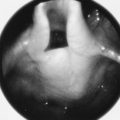chapter 14 Psychiatric Assessment of Children and Adolescents
We provide guidelines for the approach to the clinical interview and the content, including:
Clinical Interview
Format
Setting
The issue of privacy has been mentioned in Chapter 1. Although privacy in interviews with adults is often emphasized, children’s needs for privacy are frequently overlooked. Ensure that the child’s interview is free of intrusions and cannot be overheard.
Obtaining the Presenting History
Specific features of the interview with parent(s)
Specific features of the interview with the child
Specific features of a family interview with parents and children
Family discord and disruption are strongly linked to psychiatric problems in children. The importance of family dynamics has been highlighted in Chapter 1; it is essential to assess (even briefly) the interpersonal relationships and interactions with at least the parent(s) and child with the presenting complaint and preferably the child’s siblings. Family interviewing is occasionally contraindicated, for example, in child abuse when the alleged perpetrator is a family member or when there is the potential for violence. Guidelines for family interviewing in the course of a psychiatric assessment are as follows:
Assessing Symptoms
Disruptive behavioral problems
Some specific questions about disruptive behavioral problems include:
Substance abuse
Eliciting information about emotional disorders
Depression
Anxiety
Other diagnostic considerations that may help determine the presence of pathologic anxiety include:
Suicidal ideation and behavior
Risk of completed suicide increases with certain associated features:
Inquiring about child maltreatment
Examples of questions to elicit concerns about child maltreatment:
Interviewing patients with mental retardation
Cultural considerations
Physical Examination
Standardized Interviews and Questionnaires
Each of these instruments has parallel versions for completion by parents so that systematic information can be obtained about a list of behaviors. These are screening instruments, however, and should not be used for making specific diagnoses.
Martin A., Volkmar F.R., editors. Lewis’s child and adolescent psychiatry: a comprehensive textbook, 4th ed., Philadelphia: Lippincott, 2007.
Morrison J.R., Anders T.F. Interviewing children and adolescents: skills and strategies for effective DSM-IV diagnosis. New York: Guilford Press, 2001.
Sadock B.J., Sadock V.A. Kaplan & Sadock’s concise textbook of child and adolescent psychiatry. Philadelphia: Lippincott, 2009.







